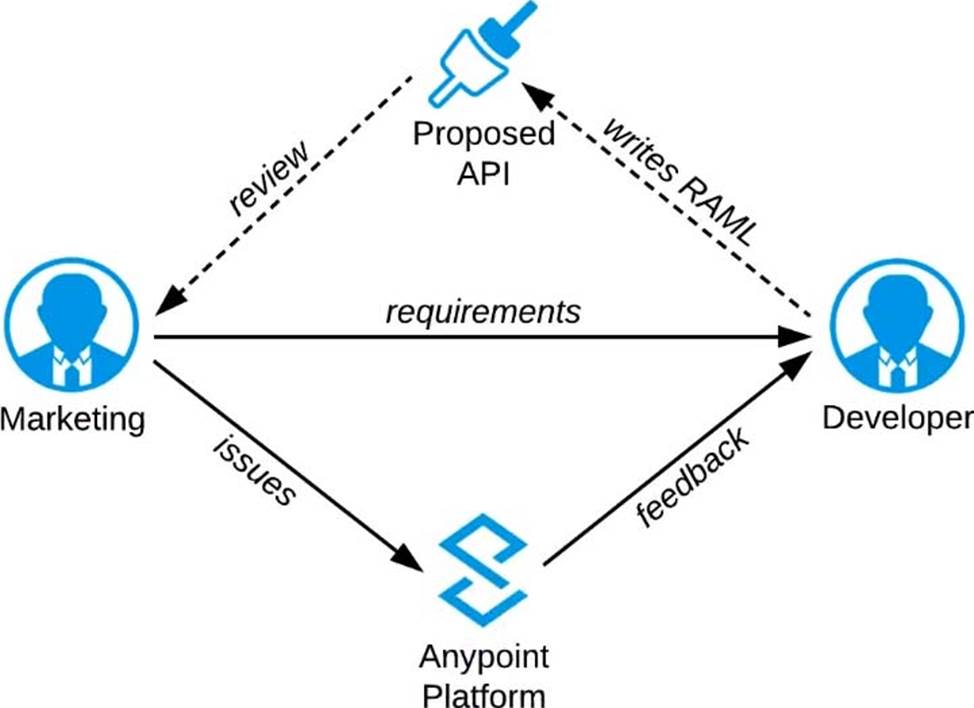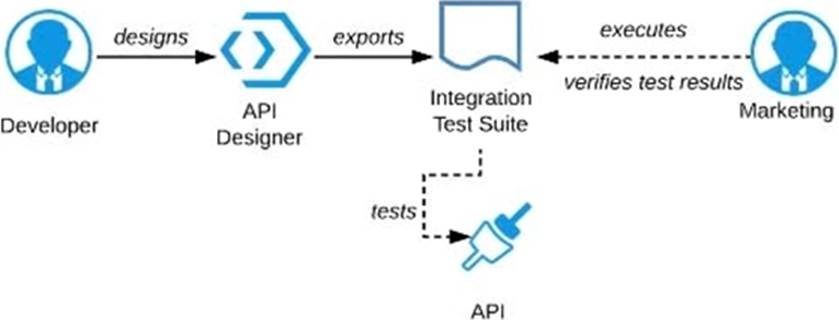Mulesoft MuleSoft Certified Platform Architect-Level 1 MuleSoft Certified Platform Architect – Level 1 Online Training
Mulesoft MuleSoft Certified Platform Architect-Level 1 Online Training
The questions for MuleSoft Certified Platform Architect-Level 1 were last updated at Apr 08,2025.
- Exam Code: MuleSoft Certified Platform Architect-Level 1
- Exam Name: MuleSoft Certified Platform Architect - Level 1
- Certification Provider: Mulesoft
- Latest update: Apr 08,2025
In an organization, the InfoSec team is investigating Anypoint Platform related data traffic.
From where does most of the data available to Anypoint Platform for monitoring and alerting originate?
- A . From the Mule runtime or the API implementation, depending on the deployment model
- B . From various components of Anypoint Platform, such as the Shared Load Balancer, VPC, and Mule runtimes
- C . From the Mule runtime or the API Manager, depending on the type of data
- D . From the Mule runtime irrespective of the deployment model
When designing an upstream API and its implementation, the development team has been advised to NOT set timeouts when invoking a downstream API, because that downstream API has no SLA that can be relied upon. This is the only downstream API dependency of that upstream API.
Assume the downstream API runs uninterrupted without crashing.
What is the impact of this advice?
- A . An SLA for the upstream API CANNOT be provided.
- B . The invocation of the downstream API will run to completion without timing out.
- C . A default timeout of 500 ms will automatically be applied by the Mule runtime in which the upstream API implementation executes.
- D . A load-dependent timeout of less than 1000 ms will be applied by the Mule runtime in which the downstream API implementation executes.
What best explains the use of auto-discovery in API implementations?
- A . It makes API Manager aware of API implementations and hence enables it to enforce policies.
- B . It enables Anypoint Studio to discover API definitions configured in Anypoint Platform.
- C . It enables Anypoint Exchange to discover assets and makes them available for reuse.
- D . It enables Anypoint Analytics to gain insight into the usage of APIs.
A
Explanation:
Reference: https://docs.mulesoft.com/api-manager/2.x/api-auto-discovery-new-concept
What should be ensured before sharing an API through a public Anypoint Exchange portal?
- A . The visibility level of the API instances of that API that need to be publicly accessible should be set to public visibility.
- B . The users needing access to the API should be added to the appropriate role in Anypoint Platform.
- C . The API should be functional with at least an initial implementation deployed and accessible for users to interact with.
- D . The API should be secured using one of the supported authentication/authorization mechanisms to ensure that data is not compromised.
A
Explanation:
Reference: https://docs.mulesoft.com/exchange/to-share-api-asset-to-portal
Refer to the exhibit.

A RAML definition has been proposed for a new Promotions Process API, and has been published to Anypoint Exchange.
The Marketing Department, who will be an important consumer of the Promotions API, has important requirements and expectations that must be met.
What is the most effective way to use Anypoint Platform features to involve the Marketing Department in this early API design phase?
- A . Ask the Marketing Department to interact with a mocking implementation of the API using the automatically generated API Console.

- B . Organize a design workshop with the DBAs of the Marketing Department in which the database schema of the Marketing IT systems is translated into RAML.

- C . Use Anypoint Studio to implement the API as a Mule application, then deploy that API implementation to CloudHub an
Department to interact with it.

- D . Export an integration test suite from API designer and have the Marketing Department execute the tests in that suite to ensure they pass.

Latest MuleSoft Certified Platform Architect-Level 1 Dumps Valid Version with 58 Q&As
Latest And Valid Q&A | Instant Download | Once Fail, Full Refund

